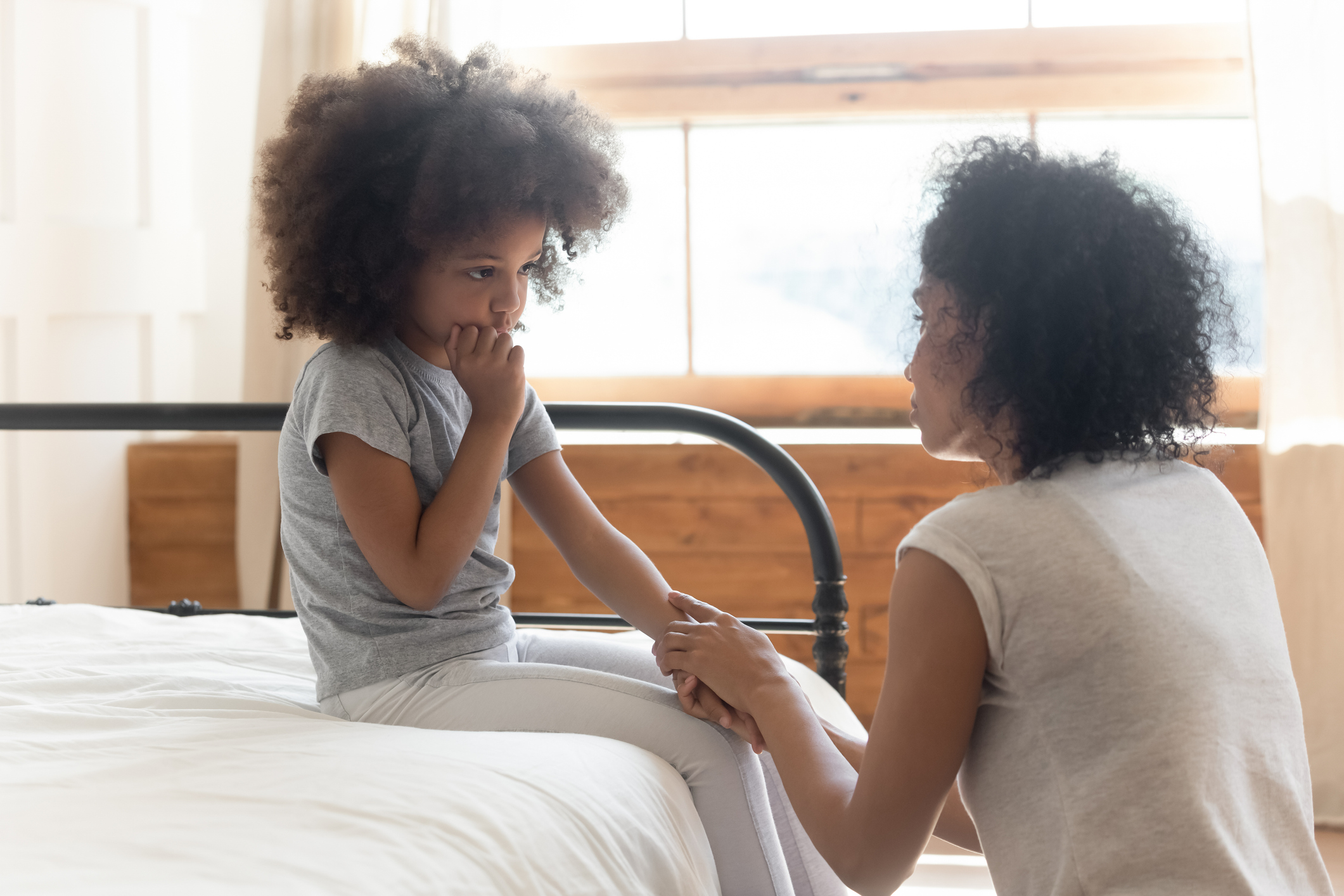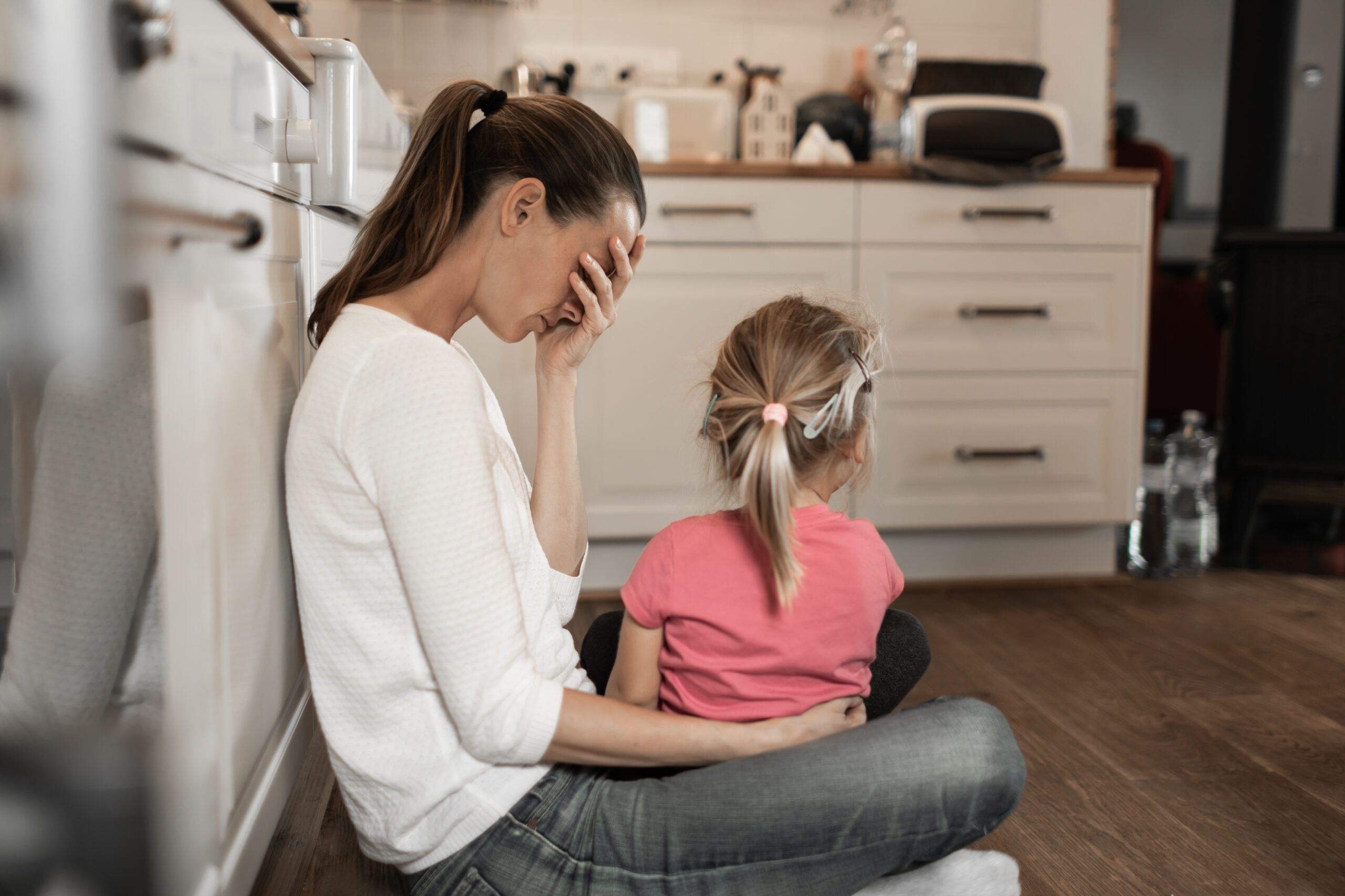“Um, Mom,” my daughter said, “I broke that yesterday.” I’d just noticed a crack in the towel rack in the kids’ bathroom. This thing’s probably as old as the house, I thought. Vintage 1930s. Irreplaceable. But I suppressed my urge to freak out. “Aw, don’t worry about it. It’s old,” I finally said. “It still works well enough.” My daughter exhaled beside me. “I’m really sorry,” she added. Forcing myself to stay calm and keep perspective hopefully gave my daughter more courage to come to me again in the future when things go wrong.
No one wants kids throwing tantrums when they get a B on a test or rip their favorite jeans. So, let’s lead by example by with these 7 ways to teach kids the calm response.
But first, you need to know this…
I’ve gotten upset and lost my cool more times than I remember. But I realized at one point that my big reactions influenced how my kids responded to stressful situations. I didn’t want my kids throwing tantrums, so I had to work hard to control my reactions. I still mess up, but here’s what I’ve learned along the way to better teach my kids a calm response.
1. Recognize what triggers you.
My daughter’s friend Lila freaked out one day when she got her pants dirty on the playground. “My mama’s gonna be so mad at me!” she said as my daughter patted her back.
If the prospect of more laundry is your trigger, acknowledge it and try responding in a calm way. “Dirty clothes are a sign of a good time!” you could say. Kids throwing tantrums happens, but if you can identify your triggers, you’ll not only make a calmer environment for your kids, but you’ll be able to model the attitude you’d like your child to have when things go wrong.
2. Project calm even if you’re feeling stressed.
We were already running late when my daughter announced from the back seat that she forgot her piano books. In the past, I’ve flipped out over forgotten lunches and having to rush home. But this time, I pulled over and took a deep breath before turning back toward home.
Yelling might feel good in the moment, but it only it teaches your child that freaking out is acceptable. Instead, take a moment to collect your thoughts. Your silence is better than letting your anger take over and scaring your child.
3. Talk through your response to practice emotional self-control.
I’d just handed my son a grilled ham and cheese sandwich. He took two steps toward the table when it slid off his plate to the floor. “It’s OK,” I said after a pause. I pushed down my frustration and told my child (and myself), “It’s just a sandwich. I can make a new one.”
We want our children to be able to handle life’s big punches, but to do that, we have to start with teaching them how to handle the little ones.
4. Stay balanced with your child’s wins and losses.
If our kids are used to big, overblown responses when they succeed, it’s going to be harder for them when they fail. We don’t want them to think our love and approval hinge on their shining moments. We also don’t want it to look like their failures bring us down. Staying steady in the middle is best.
If kids see you staying balanced in your reactions, they will too. And that’s especially important with failures because those tend to happen a lot more often.
Being able to discipline a child with consistency takes energy and determination. Click To Tweet5. Use words of affirmation to build your child’s internal monologue.
The other day, I hit the curb trying to parallel park. “Ugh! I’m usually good at this,” I said to my son next to me. A few months ago, I might’ve shouted some angry words, but this time, I tried to stay calm. “It’s harder in the rain,” I said to both of us. “I just need to take my time.”
Don’t put yourself down or freak out when things go wrong. Be honest with yourself, but give yourself grace too. “I messed up, but I’ll do better next time.” Your kids are watching and listening. Help them learn good habits for their own self-talk so they learn the right words to use to reassure themselves.
6. Project confidence rather than chaos.
One evening, a police officer directing traffic shouted at me to move quicker through an intersection. Inside, I felt embarrassed and angry at being scolded, but with my kids in the back seat, I knew I needed to keep it together. “Maybe she’s having a bad day,” I mused aloud. “It’s probably pretty stressful when there are so many cars. Let’s pray for her, OK guys?”
Even though my gut response was to be upset, I tried to turn it around. Things aren’t always going to go our way. But if we’re confident and cool, we show our kids a better way to respond than freaking out.
7. If you slip up, revisit the situation with your child.
“I got too upset today over something very minor. That wasn’t a good way to respond, was it?” I asked my daughter as I tucked her into bed.
Admitting we’ve made a mistake shows kids that when we’re not at our best, we can still go back and ponder what we could’ve done better. Besides, it’s good for kids to know sooner than later that no one’s perfect.
Are some kids throwing tantrums because they’re watching us? How do you project calm when your impulse is to scream?










